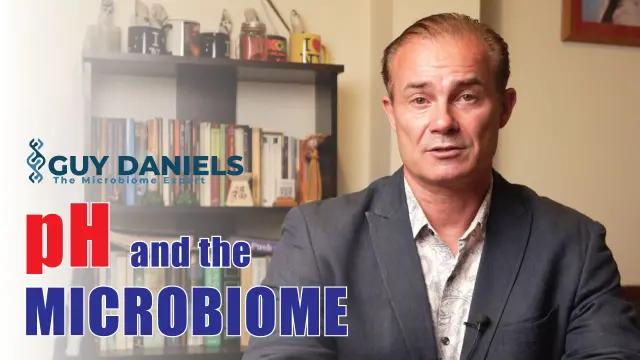Usually when someone hears about pH, it’s in science class or when someone is touting a diet to decrease the acidity in your body. In my free presentation entitled, “pH and the Microbiome,” I cover those two, plus the real purpose of the presentation, which is the pH of the vaginal and intestinal microbiome.
But first, let’s touch on the goofy “pH diet”. A diet is not going to change your pH. Your body keeps the pH of your blood within a very narrow range. What you can change are the stresses put on the compensatory mechanisms that keep the pH in this range. But avoiding all animal protein, blueberries and walnuts is not the way to do it. I offer up science in my presentations and highlight the studies. I don’t know of anyone else doing this for you.
Now let’s talk about the pH in other parts of the body. For example, your stomach should have a very low pH. Changing that pH, with the use and overuse of PPIs (proton pump inhibitors)(acid blockers) does great damage to your microbiome. This has been proven in many studies.
Another area I cover within the presentation is that of the vaginal microbiome. Also, an acidic pH is healthy here too, albeit higher than the stomach. If the pH become too high (less acidic), then vaginal health can be compromised.
Lastly, the majority of the free presentation is spent discussing the pH of the intestinal microbiome. This too is something you don’ want to make alkaline. As the former director of education for a microbiome firm, I’ve gotten questions over the years from people thinking that the environment of the intestines should be alkaline. Although parts tend to be neutral to very mildly alkaline, your goal should be to keep it somewhat acidic, within a goldilocks zone, which is ideal for a healthy microbiome.
If the intestinal environment becomes too alkaline, or too acidic for that matter, then the ever-present opportunistic pathogens can become, well opportunistic. They then can go on to drive a long series of events which can negatively impact your health. Obviously this is something you don’t want.
What you want to do is feed the health-promoting bacteria in your gut. This is done with the intelligent use of properly blended and dosed prebiotics, with a given condition and set of symptoms in mind. Although each condition is similar in nature, there are differences in the signature microbiomes of diseases, which require more precise protocols.
I do not recommend probiotics, like the ones with which you are probably familiar, especially species from the (former) genus Lactobacillus. My goal is to feed and increase the abundance of a number of proven health-promotors, who have names you’ve never heard of before. These are the true heroes of the gut, and they are not available in the marketplace as probiotics. You have to feed them the fuels they love. And when you take good care of this powerful foreign ecosystem inside of you, it will return the favor.
In our world as it is, we all now have to be our own health advocates. With a broken government, food and medical system, you need to take charge of your healthcare. So, educate yourself, as best you can. This is why I’ve launched my educational platform. For you. You can find my presentation entitled, “pH and the Microbiome” in my Microbiome University tab, and also on my YouTube channel. If you have a condition or disease that you think would be well served by addressing your microbiome, you can visit the Protocols tab on my website, and for the mere price of a cup of coffee, you can find a science-based protocol which may dramatically improve your quality of life.

